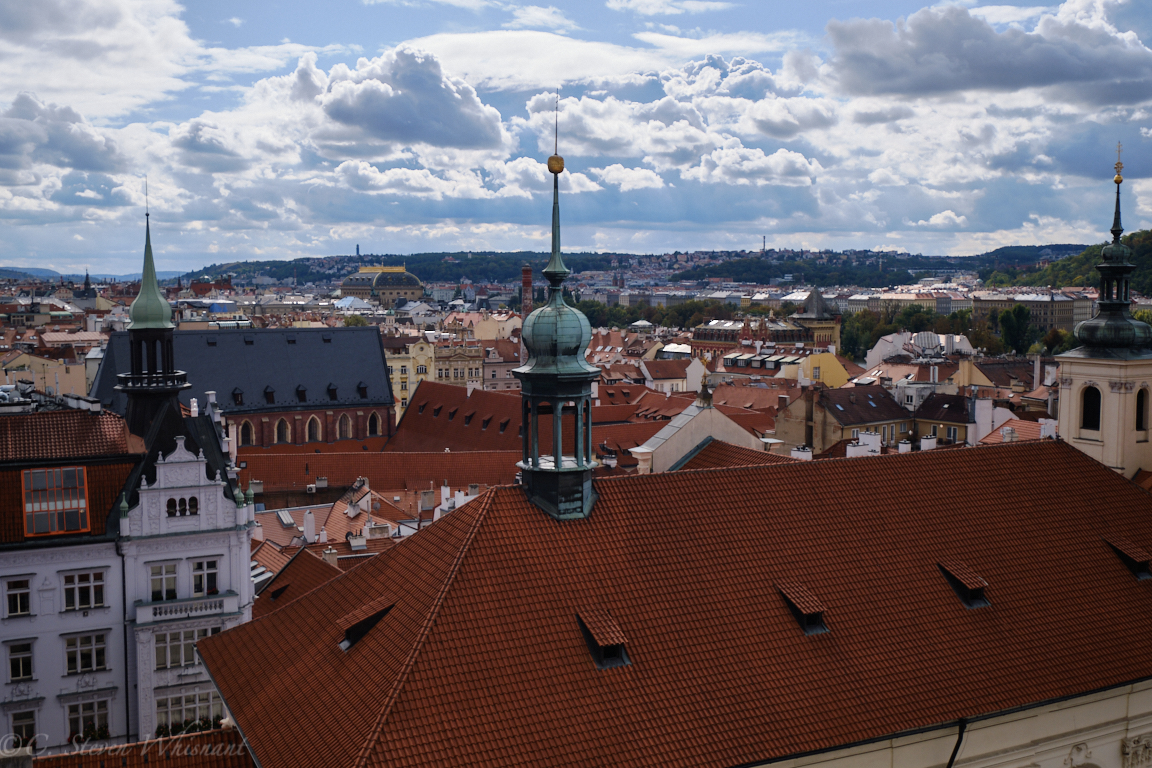In the 11th century a chapel dedicated to St. Clement was built here. In the medieval period, the Dominicans too over and in 1556 the Jesuits transformed it into a college. As Wikipedian says:
In 1622 the Jesuits transferred the library of Charles University to the Klementinum, and the college was merged with the University in 1654. The Jesuits remained until 1773, when the Klementinum was established as an observatory, library, and university by the Empress Maria Theresa of Austria.What I toured was the library and astronomical observatory section. In the photo above you see the library which is now essentially a rare book collection for the National Library.
The collection of astronomical equipment is small but interesting. There were several sextants and quadrants. The two quadrants were place in what is called the Meridian room since it lies exactly along the 15 degree meridian. There are long vertically sliding shutters that are opened/closed with a cord. On the floor is row of white marble tiles with a thread stretched six inches or so above it marking the meridian. 8-10 feet above it on the wall is a small hole. This forms a kind of camera obscura for the sun. When the image of the sun is bisected by the thread, the sun is directly overhead and it is noon. This would cause young men to grab flags and climb the remaining stair to the rooftop and signal this event. the flag waving would, in turn, cause someone elsewhere to fire a cannon, thus signaling to Prague that it was noon.
Alas, I have no photos of these spaces or items as photography is restricted and the spaces small and poorly lit. However, once at the top of the tower we could go outside to photograph everything except the building we were in.
Below is a look back toward the Old Town square where you can see St. Nicholas to the left and the Tyn Church in the center not far from the Powder Tower to its right.
this is one my first images that include, however slightly, the Vltava, or Moldau, river. It lies between us and the distant hills.
In this view of the castle and St. Vitus cathedral, you can actually see the river. See, we really are in Prague!
The onion-domed buildings are ubiquitous here, clearly showing the eastern influence on architecture.
At the top of the tower, we see the ladder to the roof as well as holes for the telescope that was once housed here.
It seems that Brahe, Kepler, and Copernicus spent time at this observatory, so I have stood on hallowed astronomical ground and seen what the greats have seen. Not a fancy museum but an interesting place nonetheless.






No comments:
Post a Comment
We enjoy hearing from our readers.